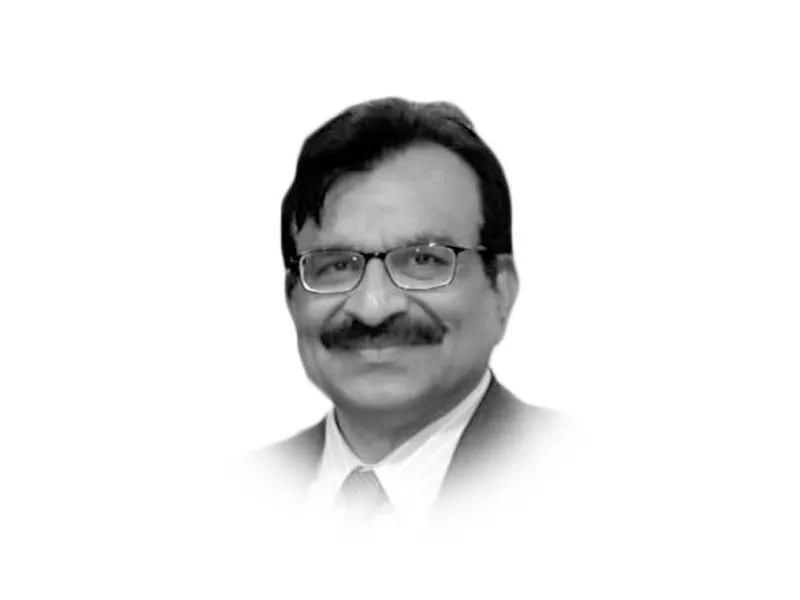False god of herd immunity
Two opposing views kept by public health professionals
Dr Ali Shan Khan is a Pakistani-descent New York-born physician who did many iconic outbreak investigations around the world. He recently called a drive towards herd immunity for Covid-19 as a “false god of herd immunity”. He is no ordinary physician, with a stealth record of public health and has held prestigious positions of assistant surgeon general of United States and director of preparedness at the US Centers for Disease Control and Prevention (CDC). Recently, my friends also blamed me for a U-turn when I shared a few months’ old article in which I stated that “vaccines are part of our arsenal but never think you can ride out this pandemic just on them.” For them it was very confusing that while on the one hand I am blaming the government for its slow pace of vaccinations in the country, on the other hand I do not think that vaccines could exclusively take us out of this pandemic. “You are contradicting yourself just to write articles and blame the government,” I was told.
Vaccines are critically important in controlling disease. According to the World Health Organization, vaccines prevent nearly five million deaths in children every year. This is a stealth performance of any disease intervention. Even in the case of Covid-19, the early results of vaccines are outstanding. Out of the 95 million Americans that are fully vaccinated against Covid-19, only 132 died due to disease. This is like 99.999% protection against the virus. A virus which has already killed roughly seven million people in just a year and the number continues to rise. In India alone, around 4,000 daily deaths are being reported officially.
So why are then public health professionals keeping two apparently opposing views? With the start of this pandemic, field epidemiologists were sidelined globally and what we call “hobbyist” epidemiologists took over. Where field epidemiologists actually manage small and large-scale outbreaks daily in their communities, countries and globally, new entrants in the field quickly amassed a few key terms of the once-ignored discipline. Most of these part-time epidemiologists were already well-respected and distinguished scientists in their own field (not epidemiology) and had access to senior decision-makers. The only tiny problem was that they had never managed outbreaks before.
And here “herd immunity” became the most sought-after indicator to be achieved by many governments. Herd immunity means that once a certain percentage (75-85%) population becomes infected or gets vaccinated, a disease will be controlled even though there are still 15-25% unimmunised people in the population. As vaccines were still not available then, many countries tried and hoped to get the necessary infection rate in their populations. There was a huge demand to do surveys to ascertain this. Upon being approached for the same, my explanation remained that at this stage these surveys would be a waste of resources as tests will not give a reliable result. Second, one must not expect to achieve herd immunity any time soon just because disease dynamics takes time to spread disease in a big population. Third, getting herd immunity without vaccination will be too costly in death and disease. However, that did not stop others from jumping in and giving different numbers. New waves of disease in cities of India and Brazil have shown that those estimates of the “majority of population already infected and protected” were quite wrong.
With vaccines we now have a safe way to protect our population. But providing vaccines to a bigger population is a major challenge. Money will just buy you vaccines, but to reach out to millions in a timely manner requires extensive planning, resource mobilisation, community engagement, risk communication strategies and speed. Unfortunately, we do not see this happening in most developing countries. Even in Israel, vaccinating the first 60% was easier, as always vaccinating the last part of the population is challenging. Globally, vaccine hesitancy will take time to be addressed even where there is availability. Until then we need to follow public health guidelines to save us and our loved ones. Keeping social distance, having well-ventilated buildings, and wearing masks will help us survive by controlling the disease until we all get vaccinated. Eventually, we will reach that ultimate “herd immunity”. Or maybe not?
The writer is an Adjunct Professor of Epidemiology at the University of Nebraska and has worked for the US Centers for Disease Control and Prevention. He can be reached at jasghar@gmail.com


COMMENTS
Comments are moderated and generally will be posted if they are on-topic and not abusive.
For more information, please see our Comments FAQ